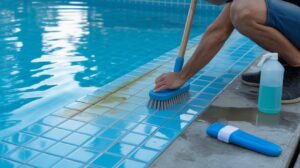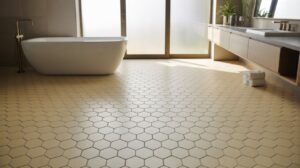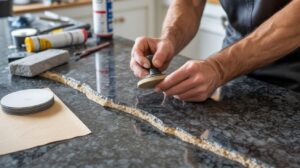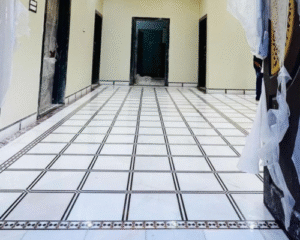To clean marble floors effectively, start by sweeping away loose dirt with a soft dust mop, then use a pH-neutral cleaner mixed with warm water to mop the surface gently, and finish by rinsing with clean water and drying immediately with a microfiber cloth. This simple yet essential process keeps your marble floors looking beautiful and protects them from damage that can cost thousands in repairs.
Marble floors bring timeless elegance to any home, but they need special care to maintain their stunning appearance. Whether you’re a homeowner in Lowell, MA, or anywhere else, understanding proper marble floor maintenance is crucial for protecting your investment. This guide will walk you through everything you need to know about washing marble floors, how to care for marble floors, cleaning marble floors, and how to mop marble floors safely and effectively.
Table of Contents
ToggleUnderstanding Marble: Why Special Care Matters
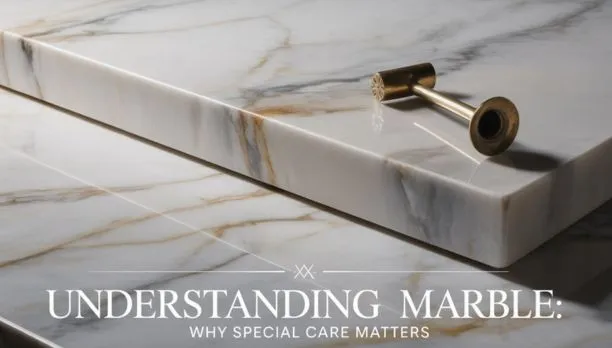
Marble is a beautiful natural stone that is both lovely and fragile. However, it is delicate and more vulnerable than other types of flooring because it is porous and made of calcium carbonate. This means that marble is susceptible to acidic chemicals in coffee, wine, and even common household cleaners. The reaction to the marble will lead to permanent dull spots that can resemble water marks.
Cleaning marble floors is different than cleaning tile or hardwood flooring. Using products improperly can lead to irreversible damage to your marble at great expense to repair.
Essential Tools and Supplies for Marble Floor Care
Before you start how to clean marble floors, gather these essential items:
Cleaning Tools
- Soft-bristled broom or dust mop
- Microfiber mop with soft cotton or microfiber heads
- Microfiber cloths for drying
- Spray bottle for cleaning solutions
- Soft-bristled brush for stubborn stains
Safe Cleaning Products
- pH-neutral marble cleaner or mild dish soap
- Warm distilled water
- Hydrogen peroxide for stain removal
- Rubbing alcohol for specific stains
What to Avoid
Never use these products on marble floors:
- Vinegar or lemon juice
- Bleach or ammonia-based cleaners
- Abrasive scrubbers or steel wool
- Generic all-purpose cleaners
Step-by-Step Guide: How to Clean Marble Floors
Step 1: Remove Loose Debris
Start by using a dry dust mop or soft-bristled broom to remove all loose dirt and debris. This prevents scratching during the wet cleaning process. If you’re also searching for quartz countertops near me, make sure your vacuum has soft attachments if you choose to vacuum instead.
Step 2: Clean Up Spills Immediately
Wipe away any spills as soon as they happen using a damp microfiber cloth. Even with protective sealant, acidic spills can cause permanent etching if left on the surface.
Step 3: Prepare Your Cleaning Solution
Mix a few drops of pH-neutral marble cleaner or mild dish soap with warm water in a bucket. Fill a second bucket with clean water for rinsing. The key is using very little soap; too much can leave a film on your marble.
Step 4: Mop the Floor Properly
Dip your soft mop in the cleaning solution and wring it well – the floor shouldn’t be sopping wet. Work in small sections, rinsing your mop frequently to avoid spreading dirt. This technique ensures effective washing of marble floors without oversaturating the stone.
Step 5: Rinse Thoroughly
Use your second bucket of clean water to rinse each section after cleaning. This removes any soap residue that could dull your marble’s shine.
Step 6: Dry and Buff
How to Care for Marble Floors: Long-Term Maintenance
Sealing Your Marble Floors
Polishing Schedule
Regular marble polishing helps preserve its natural gleam and remove any minor scratches, providing optimal appearance over time. In homes with light foot traffic, polish every 2-3 months for best results; high traffic areas may need monthly polishing sessions. Professional polishing every 1-2 years provides optimal appearance.
Preventive Measures
- Place rugs in high-traffic areas and at entrances
- Use coasters under drinks and cutting boards when preparing food
- Clean spills immediately, especially acidic substances
- Avoid dragging furniture across marble floors
Removing Stains from Marble Floors
Common Stain Types and Solutions
Water Stains and Soap Scum
Mix one cup of hot water with half a teaspoon of dish soap in a spray bottle. Apply to the stained area, let sit for five minutes, then clean with a microfiber cloth.
Organic Stains (Coffee, Wine, Food)
Create a paste using baking soda and water. Apply the stain, cover with plastic wrap, and let sit overnight. Rinse thoroughly and dry the area.
Oil-Based Stains
For grease or oil stains, use a few drops of mineral spirits on a soft cloth. Work gently and rinse immediately with clean water.
Ink Stains
Saturate a paper towel with rubbing alcohol and place it over the ink stain. Leave for several minutes, then gently rub and rinse with clean water.
DIY Natural Marble Cleaning Solutions
If you prefer natural cleaning methods, here’s a safe recipe for how to mop marble floors using household ingredients:
Homemade Marble Cleaner
- 1/4 cup high-proof vodka or rubbing alcohol
- 1 1/2 cups water
- 1/2 teaspoon liquid castile soap
- 10 drops lemon essential oil (optional)
Mix all ingredients in a spray bottle. This solution is pH-neutral and safe for regular use on marble surfaces.
Common Mistakes to Avoid
Using the Wrong Cleaning Products
Many homeowners unknowingly cause damage to their marble by using household cleaners like vinegar. Acidic cleaners dissolve its surface, leaving permanent etch marks behind.
Ignoring Spills
Leaving spills on marble, especially acidic liquids, allows them to penetrate the stone and create deep stains. Always clean spills immediately.
Over-Wetting the Floor
Using too much water during cleaning marble floors can cause moisture to seep into the stone’s pores, leading to discoloration or damage.
Using Abrasive Tools
Scrubbing with rough brushes or abrasive pads creates scratches that dull marble’s surface. Always use soft cloths and gentle pressure.
Professional vs. DIY Marble Care
While regular washing of marble floors can be done at home, some tasks require professional expertise:
When to Call Professionals
- Deep stains that won’t respond to home treatments
- Significant etching or scratches
- Annual sealing and polishing
- Restoration of severely damaged marble
DIY Maintenance Tasks
- Daily sweeping and immediate spill cleanup
- Weekly mopping with proper techniques
- Minor stain removal
- Regular inspection for damage
Marble Floor Care for Different Areas
Kitchen Marble Floors
Kitchens see more spills and foot traffic, requiring daily attention. Place mats near sinks and cooking areas to catch splashes. Clean cooking spills immediately to prevent staining.
Bathroom Marble Floors
Bathrooms need special attention due to moisture and soap residue. Use a squeegee after showers to remove excess water. Ensure proper ventilation to prevent moisture buildup.
Entryway Marble Floors
Place high-quality mats both inside and outside entryways to reduce dirt and moisture. Clean these areas more frequently due to higher foot traffic.
Cost-Effective Marble Maintenance Tips
Proper care for marble floors doesn’t have to break the bank:
- Invest in quality microfiber mops and cloths for better cleaning results
- Buy pH-neutral cleaners in bulk to save money
- Learn to handle minor stains yourself before calling professionals
- Prevent damage with simple protective measures like rugs and coasters
Expert Marble Floor Installation for Lasting Beauty
At SF Marble & Granite Inc., we know that a flawless marble floor starts with expert installation. Our professional marble floor installation service ensures your new floors are perfectly leveled, securely set, and beautifully finished to bring timeless elegance to your Lowell home. From preparing the surface and carefully laying each marble tile to precise grouting and sealing, we handle every step with care and skill. Proper installation not only enhances your marble’s natural shine but also makes cleaning and maintenance easier, helping your floors stay stunning for years. Trust us to deliver the quality craftsmanship your marble deserves.
Final Thought
Understanding how to clean marble floors properly is the key to protecting your investment and keeping your home looking elegant for years. Keep in mind that successful marble care requires taking preventive steps – using appropriate products, wiping up spills as soon as they occur, and maintaining an ongoing cleaning schedule.
At SF Marble & Granite Inc. in Lowell, Massachusetts, we understand the significance of proper stone care. After years of experience working within Lowell’s marble and granite industry, our experience has taught us that prevention is always superior to restoration. By following these guidelines for maintaining stunning looks with long-term durability.
FAQs
How often should I clean my marble floors?
Cleaning marble floors should be done weekly for regular maintenance, with daily sweeping to remove loose dirt. High-traffic areas may need more frequent cleaning.
Can I use vinegar to clean marble floors?
No, never use vinegar on marble floors. Vinegar is acidic and will cause permanent etching and damage to the marble surface.
What’s the best mop for marble floors?
Use a microfiber mop with soft cotton or microfiber heads. Avoid string mops that can trap dirt and scratch the surface.

